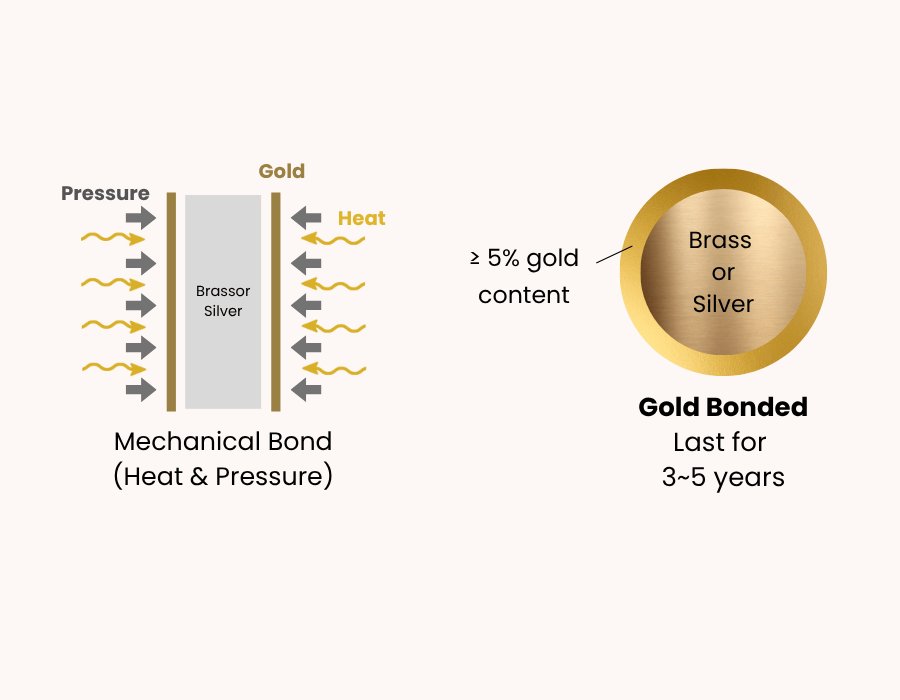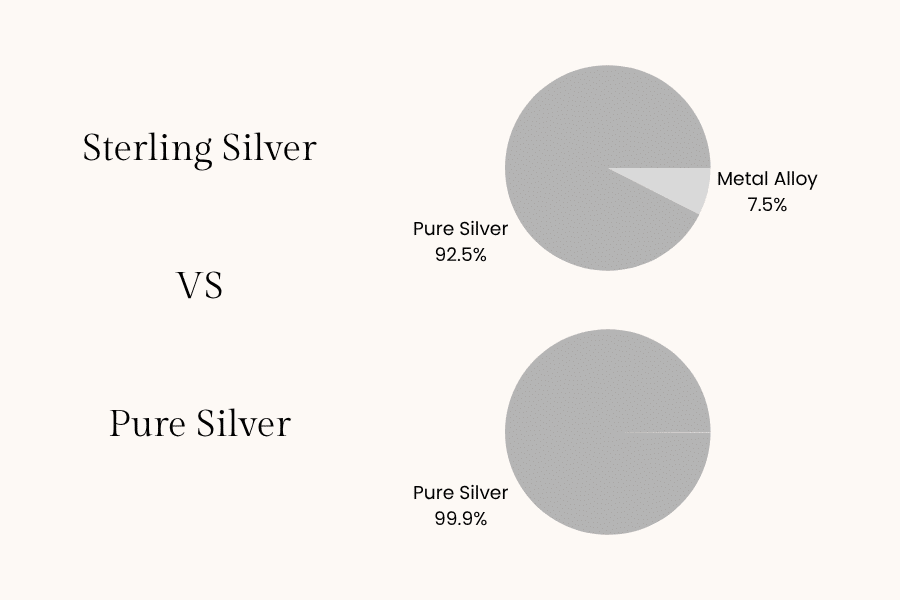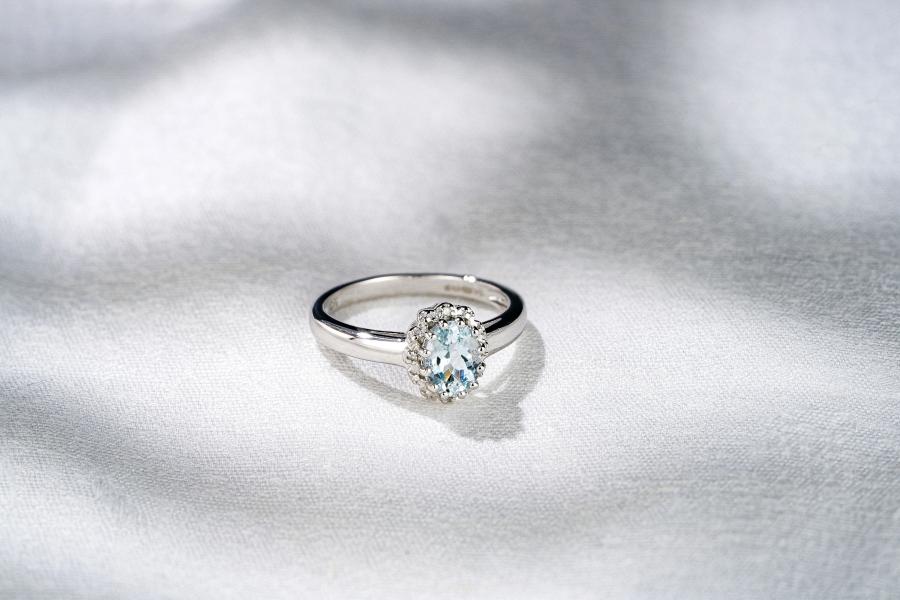When it comes to choosing between jewelry, metal plays a crucial role. Over the years, stainless steel and sterling silver have been two popular options in everyone’s mouth, debating their merits and drawbacks.
In this blog post, we will provide a solution to the stainless steel jewelry vs sterling silver jewelry debate by comparing their characteristics, pros and cons, and which is better for specific needs.
Basics on Stainless Steel Jewelry
Materials & Composition
Stainless steel jewelry is a mixture of various metals, such as iron, carbon, and at least 10.5% chromium. The composition of these materials makes stainless steel exceptionally strong, resistant to rust & corrosion, with a modern look.
Color Options
Stainless steel jewelry can be produced in varying colors, like:
- Steel (Rhodium-Plated): Rhodium, a rare and shiny metal can be plated on stainless steel jewelry for an extra layer of protection against scratches. It offers a bright, reflective finish.
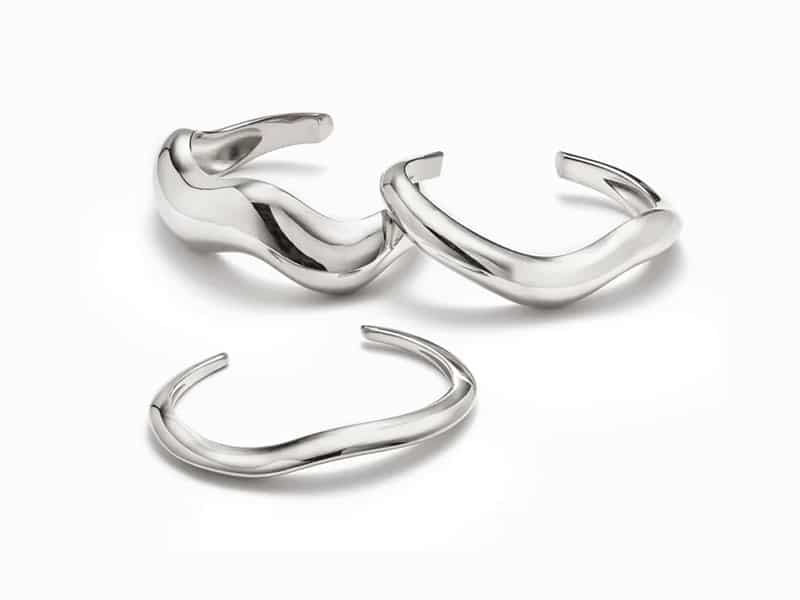
- Gold (Gold PVD Plating): Involves bonding a thin layer of gold on stainless steel jewelry for a durable, attractive finish. It results in gold look-alike jewelry with great resistance to wear and tarnishing.
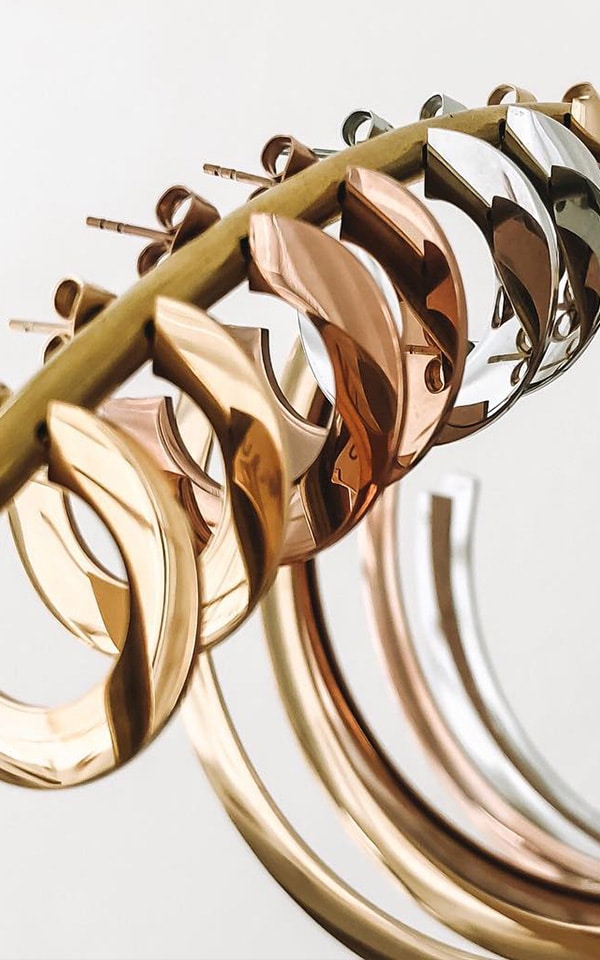
- Special Colors: Stainless steel can be designed through different techniques like electroplating or ion plating to achieve other colors like black, rainbow, rose gold, etc.
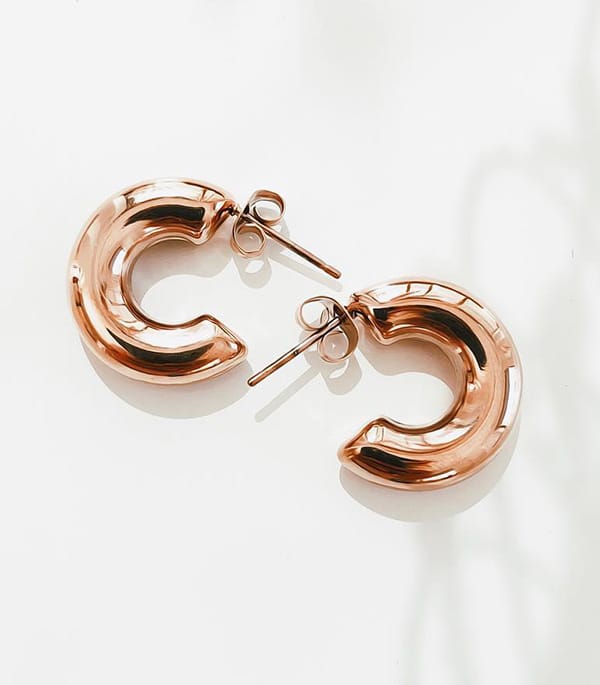
Basics on Sterling Silver Jewelry
Materials & Composition
Sterling silver jewelry is composed of 92.5% pure silver and 7.5% other metals (mostly copper). Other metals are added because pure silver is too soft for durable pieces like jewelry. However, the overall blend gives sterling silver longevity, luster, and malleability, making it suitable for intricate jewelry designs.
Color Options
Sterling silver can be produced in varying colors, such as:
- Silver (Rhodium-Plated): Rhodium can be plated on sterling silver to provide a strong, shiny, and reflective surface. The plating increases the durability and enhances the look of the jewelry.
- Gold (Gold Layer Plating): Sterling silver can also be plated with a layer of gold to increase its toughness and achieve a real gold appearance. The gold layer can be in several shades like yellow or rose.
- Special Colors: Sterling silver jewelry can be coated or treated to achieve a wide range of colors, such as black, blue, green, etc. With its support for a broad spectrum of colors, numerous options are available to suit different tastes and styles.
Comparing Stainless Steel Jewelry vs. Sterling Silver Jewelry
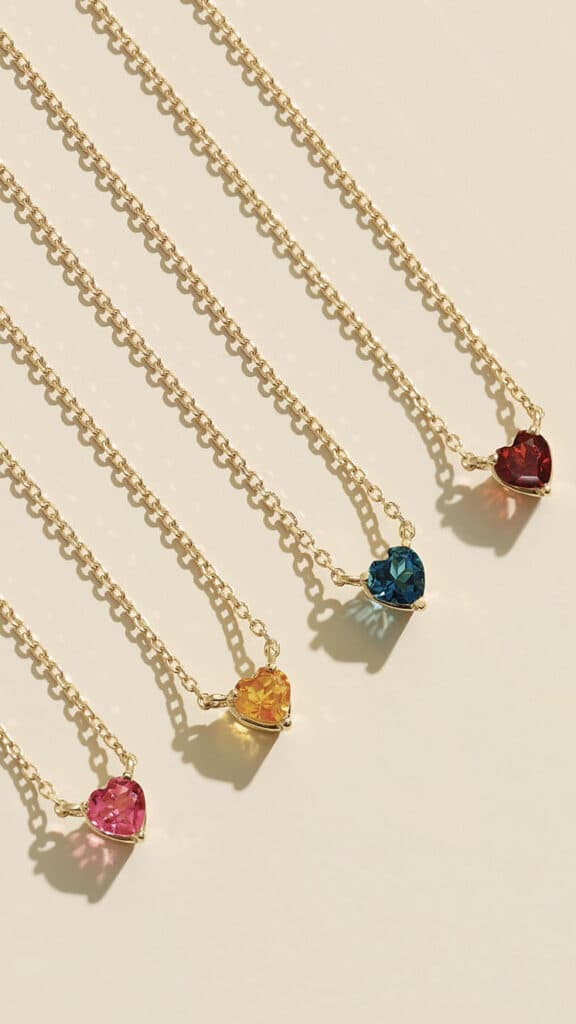
To make an informed decision when selecting stainless steel jewelry or sterling silver jewelry, these are factors you need to consider:
Aesthetics & Structure
- Stainless steel jewelry exudes a contemporary aesthetic and structure. It fits into modern and minimalist styles, making it the most ideal for trendy looks. Stainless steel’s rigidity makes it perfect for robust, bold jewelry like rings, bracelets, and watches.
- Sterling silver jewelry, on the other hand, offers timeless elegance that blends with formal and everyday occasions. Its brilliant shine and luster remain relevant for centuries. Sterling silver is more malleable, making it best suited for intricate and delicate jewelry designs like earrings and pendants.
Price & Value
- Stainless steel jewelry is more budget-friendly. The cost of stainless steel material is lower and its durability minimizes the need for frequent replacements or repairs.
- Sterling silver jewelry is more expensive due to the higher cost of silver, which is a precious metal. But because of sterling silver’s classic beauty, it’s perceived as an investment with greater value. Its resale potential is very high.
Durability & Sturdiness
- Because of the various metals combined in making stainless steel jewelry, it’s very durable and sturdy. It is greatly resistant to corrosion, tarnish, and scratches, making it an excellent choice for jewelry that needs to withstand daily wear and exposure to extreme conditions.
- On the other hand, sterling silver jewelry is largely composed of pure silver, a soft material that tarnishes under pressure. It requires regular polishing, care, and maintenance to keep its beauty. To ensure your sterling silver jewelry lasts long, it’s advisable to have a separate storage for it. A place where it won’t be scratched or dented by other metals.
Color & Shine Retention
Another factor worthy of consideration when discussing stainless steel jewelry vs sterling silver jewelry is the capability to retain its color and shine.
One of the peculiarities of stainless steel jewelry is its color and shine retention. It does not fade or oxidize easily. Thus, you can rest assured that it will retain its original appearance for many years.
Sterling silver jewelry tends to quickly turn green and lose its shine when oxidized. But thanks to advancements in manufacturing technologies and techniques, newly-made sterling silver jewelry is naturally shinier than stainless steel jewelry.
Water Resistance Quality
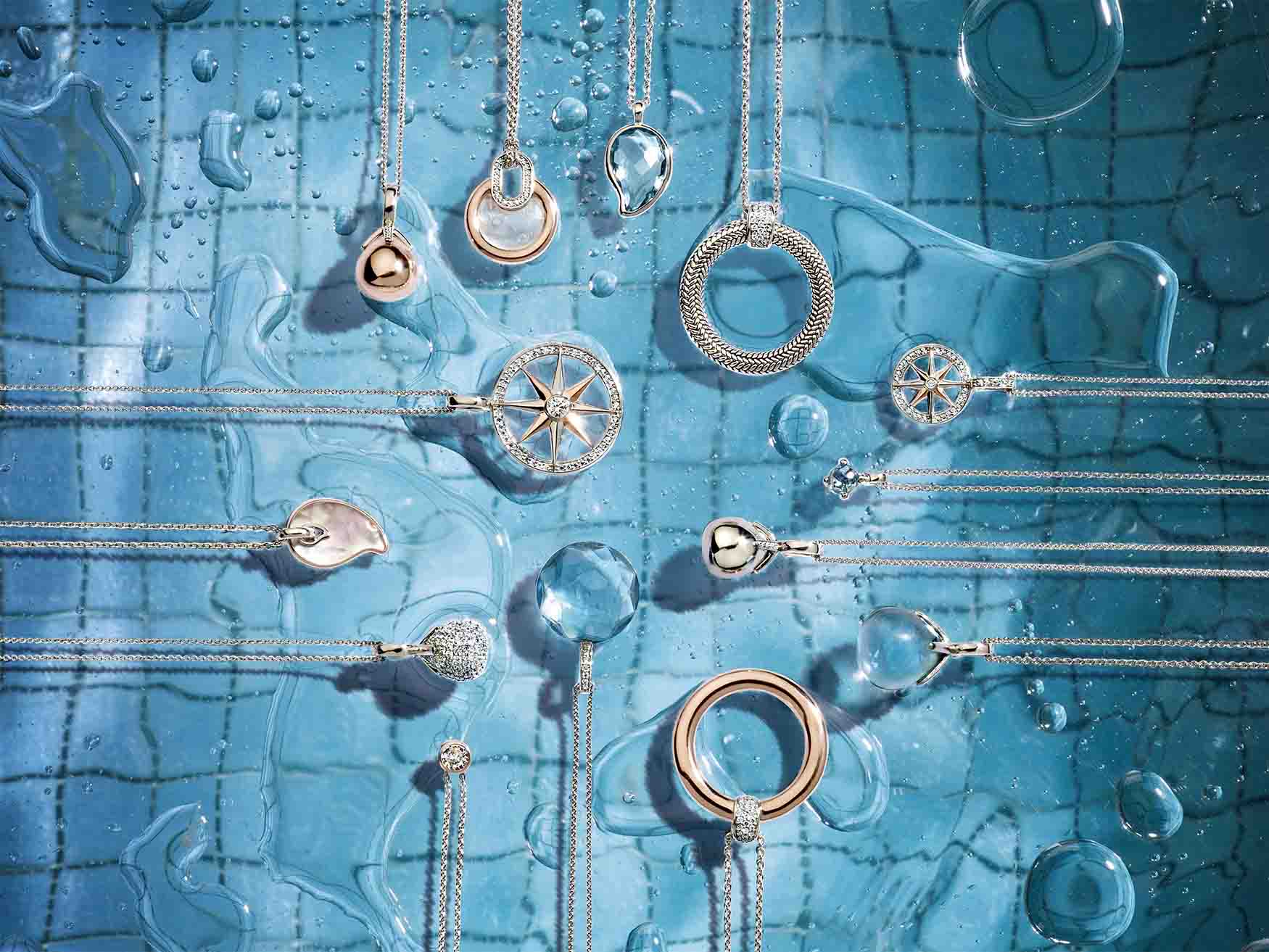
- Is Stainless Steel Jewelry Waterproof Enough? Yes. Stainless steel is a very hard material that’s highly resistant to water and won’t corrode or rust. This makes stainless steel jewelry a preferred option for individuals who like to wear their jewelry when in contact with water. It can be worn when bathing or swimming without damage.
- Sterling silver, on the other hand, is more susceptible to damage when exposed to water, especially in environments with high humidity or salt water. It’s advisable to remove sterling silver jewelry before bathing or swimming.
Hypoallergenic Quality
- Jewelry pieces made with 316L stainless steel(surgical steel) are known for their hypoallergenic quality. However, jewelry made with 304 stainless steel often contains nickel, which can cause allergic reactions in people with sensitive skin.
- Sterling silver jewelry is generally hypoallergenic. It’s largely produced with pure silver and other metals like copper, zinc, and platinum, which are suitable for all skin types.
Pros & Cons
These pros and cons will help you make a solid decision when choosing stainless steel jewelry or sterling silver jewelry.

Stainless Steel Jewelry
Pros
- Very strong. Does not corrode, rust, or tarnish.
- Suitable for people with sensitive skin or metal allergies. (316L)
- Budget-friendly.
- Perfect for everyday wear.
- Water-resistant.
- Require easy and low maintenance.
Cons
- Very hard. Not suitable for intricate jewelry designs.
- Comparatively Dull Colors
- Difficult to repair or resize by hand. You would need a professional’s help.
- Does not appreciate in value.
Sterling Silver Jewelry
Pros
- Very soft and malleable. Suitable for intricate jewelry designs and small detailing.
- Classic piece of jewelry that retains its beauty for a lifetime.
- Easy to repair, reshape, and resize.
- Available in a variety of colors and finishes.
- Appreciate in value over time.
- Hypoallergenic quality.
Cons
- Prone to damage and tarnish.
- Can be expensive.
- Lose its shine if not properly maintained.
Which is better: Stainless Steel Jewelry or Sterling Silver Jewelry
Are you a jewelry brand owner or a customer? Follow the guidelines below to choose which is better for you between stainless steel jewelry vs sterling silver jewelry.
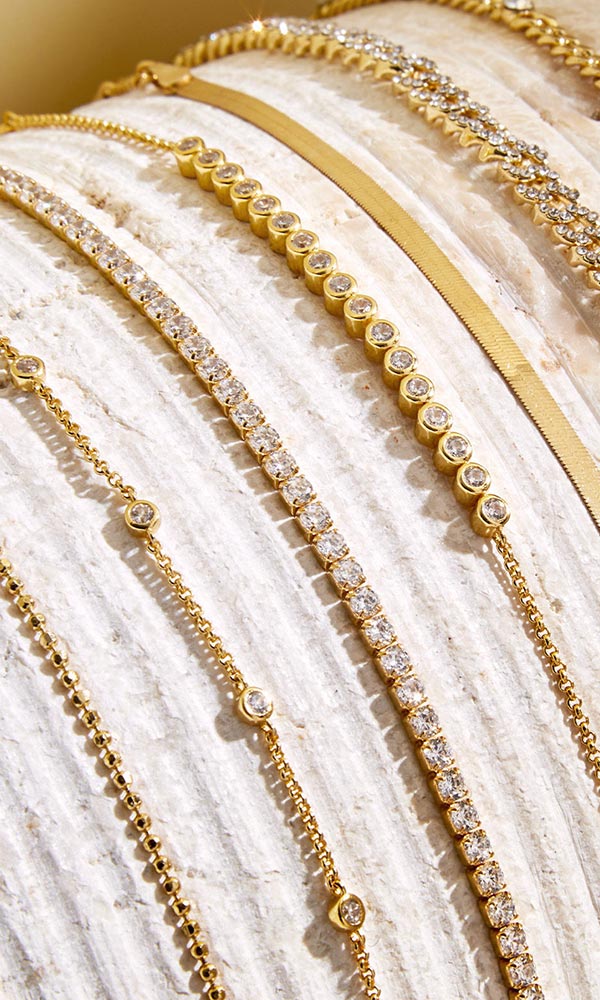
For Jewelry Business & Brand Owners
Your Market Position & Audiences
Your brand’s market position determines the type of jewelry you offer. Check if your audiences are in the upper class or lower class. Those in the upper class have a preference for more expensive and sophisticated pieces that will make them unique in gatherings. While those in the lower class have a thin budget for shiny and durable pieces that can be worn every day without getting damaged.
Thus, sterling silver jewelry, with its higher price and luster, is ideal for businesses positioned in the upper-class environment.
Stainless steel jewelry, with its affordability and capability to survive extreme conditions, is perfect for businesses positioned for a more price-sensitive setting.
Your Jewelry Designs & Styles
Consider the varying designs and styles produced from stainless steel and sterling silver. Choose which one your brand wants to focus on.
Stainless steel is a harder material suitable for modern, industrial, and minimalist designs. It is most ideal for making chunky, bold jewelry that can withstand daily wear and tear, such as statement necklaces, bracelets, and watches.
Sterling silver is highly malleable, perfect for intricate, delicate, and detailed jewelry designs. It is most ideal for traditional, vintage, and fine jewelry pieces, such as filigree work, ornate rings, and engraving.
Your Budget
Your budget is a major determinant in choosing stainless steel jewelry or sterling silver jewelry. It’s fine to switch to any option that best fits your budget, product quantity, and quality—partner with a responsible sterling silver and stainless steel jewelry manufacturer to guide you.
Stainless steel is a cost-effective metal, allowing for larger production quantities within a tight budget. The metal and manufacturing process is less expensive, meaning more jewelry can be produced at a lower cost. This is an excellent choice for brands looking to offer affordable jewelry or aiming for high-volume sales.
Sterling silver requires a higher budget because of the rarity and high cost of silver as a precious metal. Producing sterling silver jewelry requires a larger budget, which might limit the quantity of pieces you can produce. However, it has a higher price tag, meaning you can get your money back with profit.
Lead Time & Your Launching Schedule
The lead time is different for both metals based on their characteristics, such as hardness, availability, manufacturing techniques, etc. You should discuss the lead time with your supplier before making a decision so it won’t affect your business launching schedule.
The production of stainless steel jewelry is more time-consuming because of the material’s hardness, which requires tougher manufacturing. It necessitates using specialized equipment and techniques for cutting, shaping, and finishing. This results in longer lead time, especially for pieces with complex designs.
The production of sterling silver jewelry is quicker because of the softness of the material. It’s easier to work with, making it fast for making all types of jewelry, including complex and intricate designs. This results in a shorter lead time, allowing you to meet tight launching schedules and react quicker to market trends.
Another Option: Sterling Silver Jewelry with Brass Base
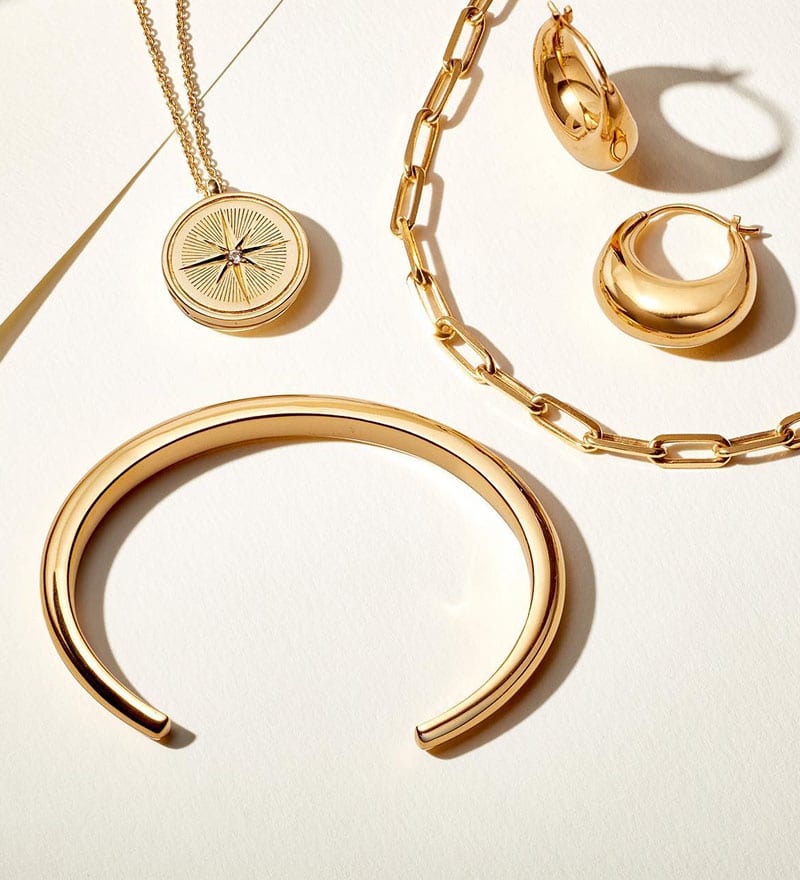
Perhaps these two jewelry types don’t fit into what your business stands for or the capability of your brand, you can choose Sterling Silver Jewelry with Brass Base, or silver-dipped brass jewelry. It typically has a brass base with a sterling silver plated surface.
You might wonder, is brass jewelry a good choice? Sterling silver jewelry with a brass base is a great option when you need to make complicated designs with less budget.
But note that this jewelry type is not as durable as stainless steel or sterling silver. Also, it’s less water-resistant and easily tarnished, revealing the brass base.
For Customers
Your Budget
If you are a budget-conscious customer, stainless steel jewelry is your go-to. You will get stylish, durable jewelry without breaking the bank. Given its resistance to fading and corrosion, you can wear it every day with minimal maintenance.
Sterling silver jewelry is a great choice for customers who want to invest more in jewelry because of its beauty, craftsmanship, and intrinsic value. The higher initial cost can be justified by its evergreen design and enduring appeal over generations. However, it requires more maintenance to retain its luster and shine.
The Color You Like
Stainless steel naturally has a silver-gray color that’s sleek and modern. It resonates best with individuals who prefer a contemporary, industrial look. But stainless steel jewelry can be produced to appear in other colors, such as rhodium, gold, black, rainbow, etc.
Sterling silver has a bright-white (natural silver) color that’s classic and timeless. It is reflective, offering a traditional and elegant look. Sterling silver can also be produced to appear in other colors, such as rhodium, gold, black, multi-colored, etc.
Therefore, assess the various color options available to choose the one you like.
Key Takeaway
The debate between stainless steel jewelry vs sterling silver jewelry ultimately comes down to preferences. Each of them has different characteristics that can complement your personal style or business strategies. Delve into the world of Zearrow, and let your jewelry choice reflect your individuality.

